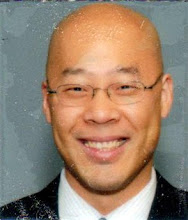Property (2005-2006)
II. RIGHTS OF OWNERS
- Finders
- Terms
Owner A person who owns property Finder A person who takes ownership of unclaimed property Property owner A person who owns real property (locus in quo) Bailor One who entrusts care of property to another Bailee One to whom the property is entrusted (voluntary and involuntary) Bailment Property that is entrusted by one to another - Elements of control
- Intent to control
- Actual control
- Among finders The first person in time to find has first claim. [Armory v. Delamirie]
- Bailment - True owner may not recover from present possessor if voluntary bailee has already recovered.
- Finder vs. Property Owner (who is not the true owner)
- If attached to the land, or under the land, land owner gets it; but
- If on the surface of the land, finder gets it; unless
- Finder is trespasser; or
- Finder is employee or independent contractor.
- Note: True owner still gets preference if present.
- Cases
- Hannah v. Peel - Hannah entitled to jewelry he found on Peel’s property which Peel hadn’t known about.
- McAvoy v. Medina – Wallet left on table in barber shop not to be treated as “lost” so cannot be “found”. Barber now involuntary bailee.
- Terms
- Gift
- Elements [Newman v. Bost]
- Intention to make the gift (may be inferred)
- Delivery
- Symbolic – Some other article delivered in the name and stead of the thing meant to be given
- Constructive – Delivery of a key to a locked house, trunk, or other receptacle
- Actual
- Acceptance [Gruen]
- Irrevocable once made
- No conditions (i.e., “if”)
- No future (i.e., “later”)
- Elements [Newman v. Bost]
- Adverse Possession
- Terms
Color of title Claim founded on a written instrument or judgment or decree that is defective and invalid Constructive possession Adverse possession under color of title - Act
- Actual [Van Valkenburgh v. Lutz – Traveled path]
- Open and Notorious [Mannillo v. Gorski - Where true owner unaware of minor encroachment, not open and notorious]
- Continuous [Howard v. Kunto - Occupancy for intended seasons, and continued existence of improvements, is continuous.]
- Exclusive
- Adverse/Hostile
- Intent
- Irrelevant (Connecticut, majority) [Mannillo v. Gorski – Staircase extension]
- Good faith mistake
- Aggressive trespasser (Maine, minority)
- Statutes of Limitations
- CA = 5 yrs.
- NY = 15 yrs. [Van Valkenburgh v. Lutz]
- Tacking On – Permitted if successive occupants are in privity. [Howard v. Kunto]
- Disabilitites – 21-year limitation unless disability, which extends for 10 years after removal of disability.
- Exception: No adverse possession against federal government.
- Chattels - Cause of action accrues when injured party discovers, or reasonably should have discovered, the conversion.
- Terms
- Right of Exclusion
- Punitive damages may exceed nominal damages. [Jacque v. Steenberg Homes - $100,000 punitive damages over $1 nominal upheld to enforce right to exclude.]
- Right of exclusion does not extend to excluding members of governmental services, charities, and press as long as there is no behavior hurtful to others. [State v. Shack]


No comments:
Post a Comment